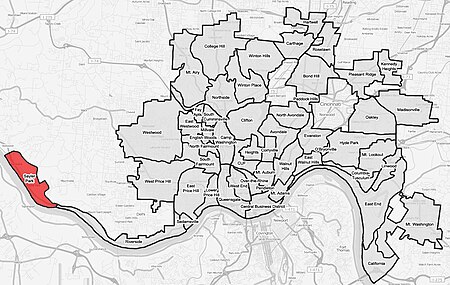Sayler Park, Cincinnati
Cincinnati stubsNeighborhoods in Cincinnati

Sayler Park is a neighborhood in Cincinnati, Ohio. The west side neighborhood on the Ohio River is approximately 1 mile (1.6 km) and 2 miles (3.2 km) wide. The population was 2,765 at the 2010 census.The 65-acre (26 ha) Fernbank Park in Sayler Park stretches over a mile along the Ohio River. The Thornton Triangle is Cincinnati's smallest municipal park.
Excerpt from the Wikipedia article Sayler Park, Cincinnati (License: CC BY-SA 3.0, Authors, Images).Sayler Park, Cincinnati
Twain Avenue, Cincinnati Sayler Park
Geographical coordinates (GPS) Address Nearby Places Show on map
Geographical coordinates (GPS)
| Latitude | Longitude |
|---|---|
| N 39.1125 ° | E -84.6891667 ° |
Address
Twain Avenue 176
45233 Cincinnati, Sayler Park
Ohio, United States
Open on Google Maps







